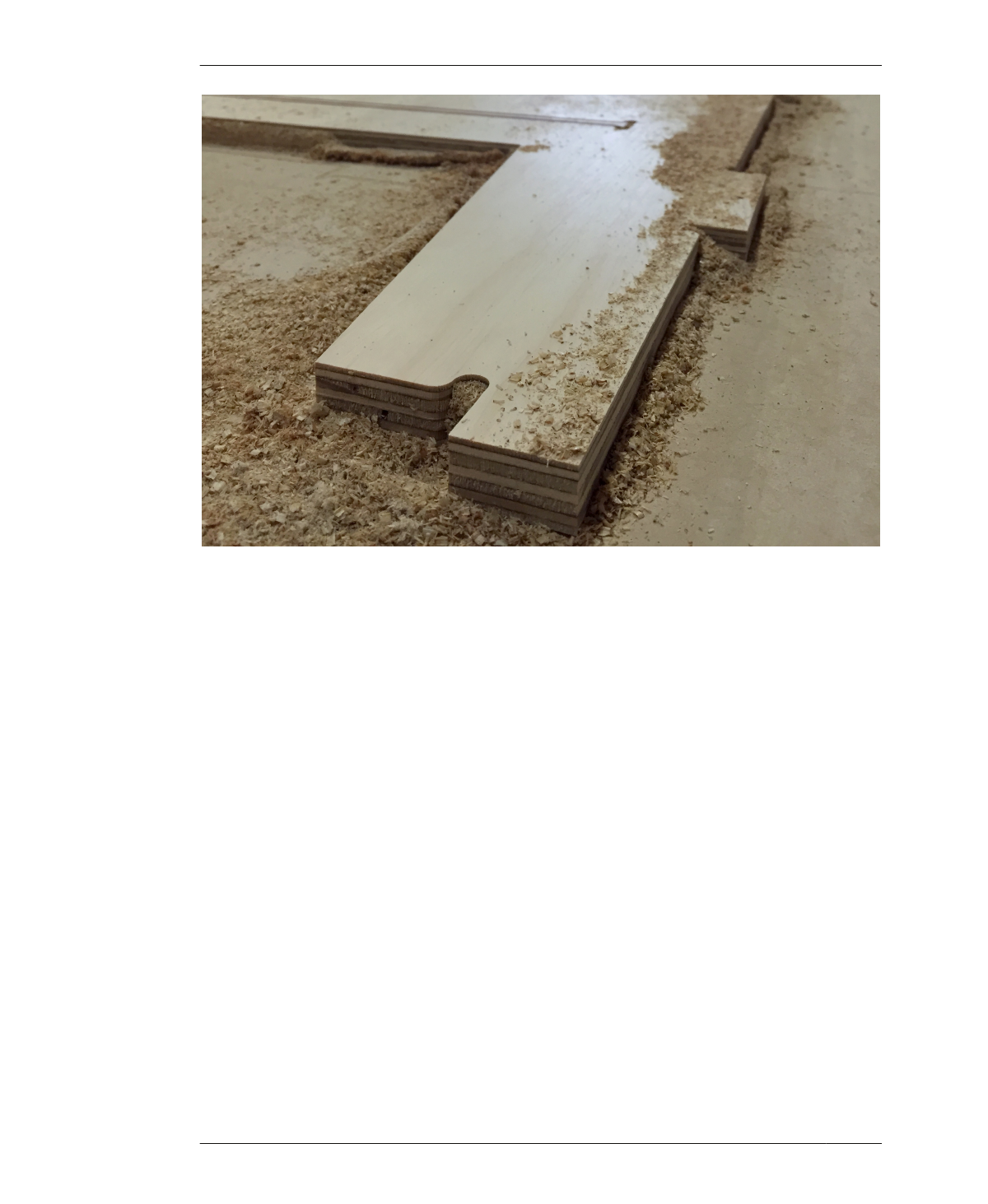
PUTTING IT ALL TOGETHER
FIGURE 6-13
Well-formed woodchips
have a slight curl
PUTTING IT ALL TOGETHER
Material properties are the primary factor driv-
ing your machining decisions. Knowing how to
properly combine machining variables with
your tool choice allows you to efficiently cut
parts with clean, smooth edges, regardless of a
material’s hardness or thickness. To produce
quality parts in a reasonable amount of time,
it’s critical to consider cut depth and feed
direction and to optimize the end-mill geome-
try with feeds and speeds that produce the cor-
rect chip load.
As it cuts through material, an end mill pro-
duces a tremendous amount of heat. If allowed
to build during machining, this heat will actually
dull the tool, or worse, cause it to break. In
order to prevent tool failure. This heat must
somehow be dissipated.
An end mill is ingeniously engineered to rely
upon the very chips it is cutting to evacuate
heat and to sustain an operable temperature. In
CNC machining, there is a sweet spot where
tool geometry combines with feed-and-speed
settings to remove chips at a rate that effec-
tively dissipates this heat.
When you find this sweet spot, your machine
runs smoothly and even quietly, without chat-
ter or vibration. Your parts come out with very
smooth edges that need a minimal amount of
sanding or filing. Test pieces are helpful in find-
ing the right balance. You can easily cut multi-
ples of them to test various setting
combinations.
TROUBLESHOOTING
We recommend using the AtFAB project test
pieces, introduced in “Test Pieces” on page 136
and downloadable from the book’s website
(http://www.designforcnc.com/), to dial in your
feeds and speeds. The test pieces are small,
and because you’re already using them to fine-
tune joinery fit prior to cutting the full-size
160
DESIGN FOR CNC
